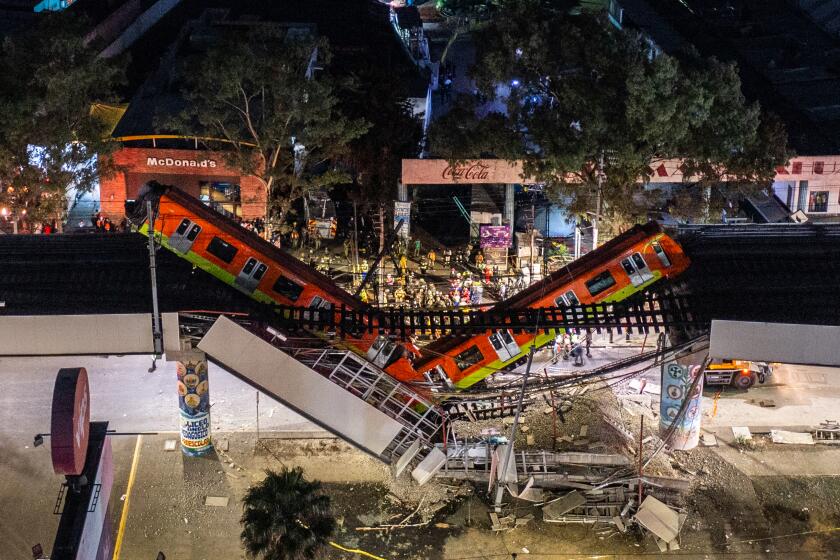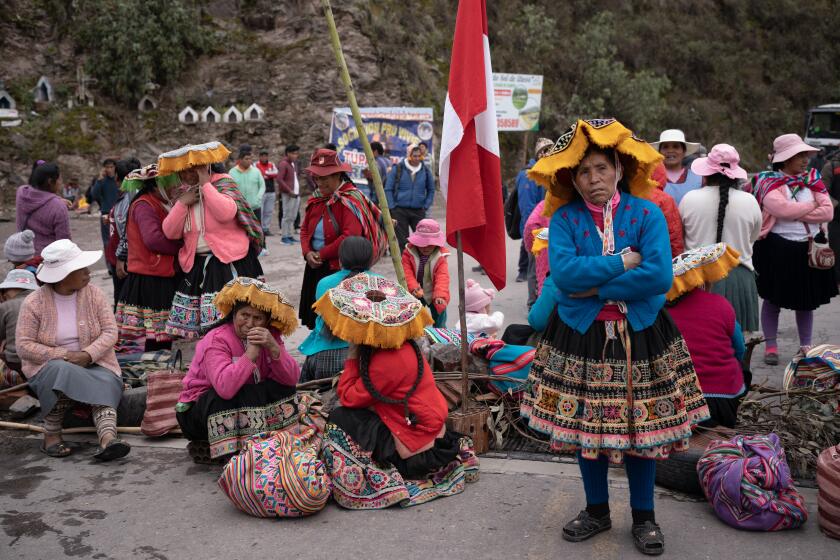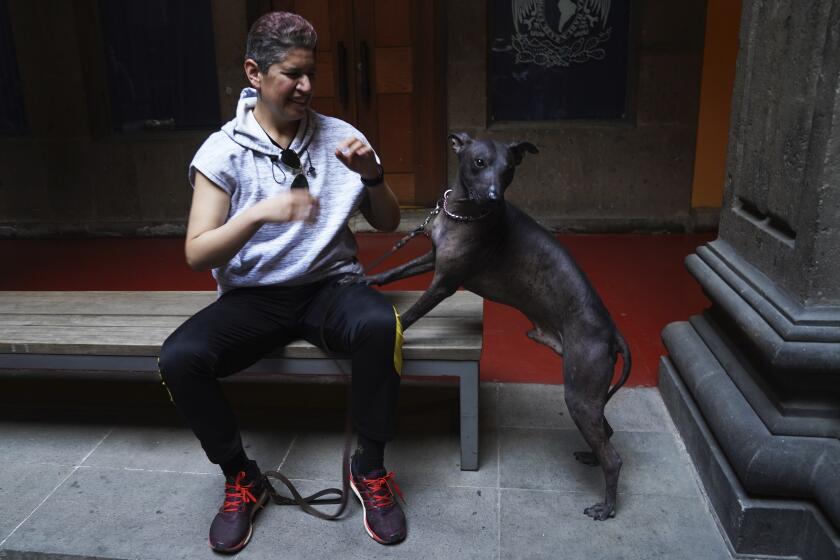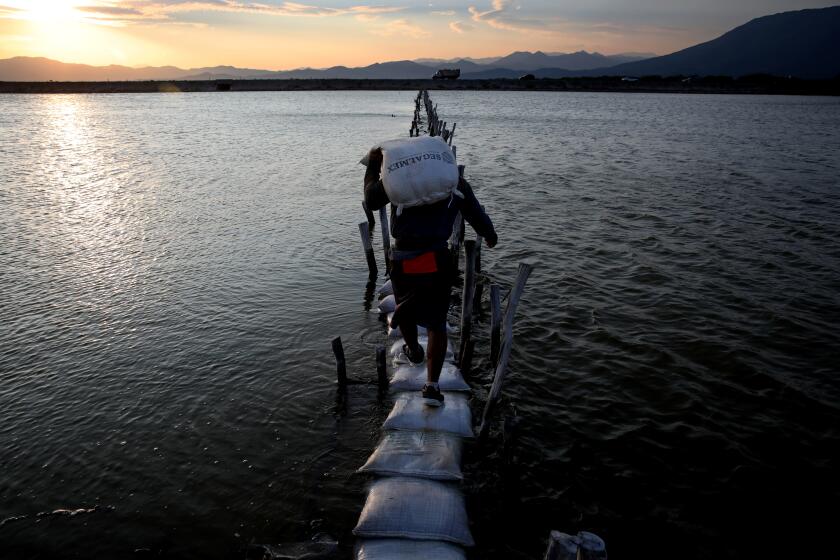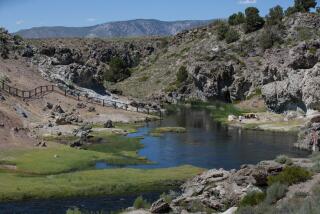Birth of Mexican volcano inspires scientists 80 years later
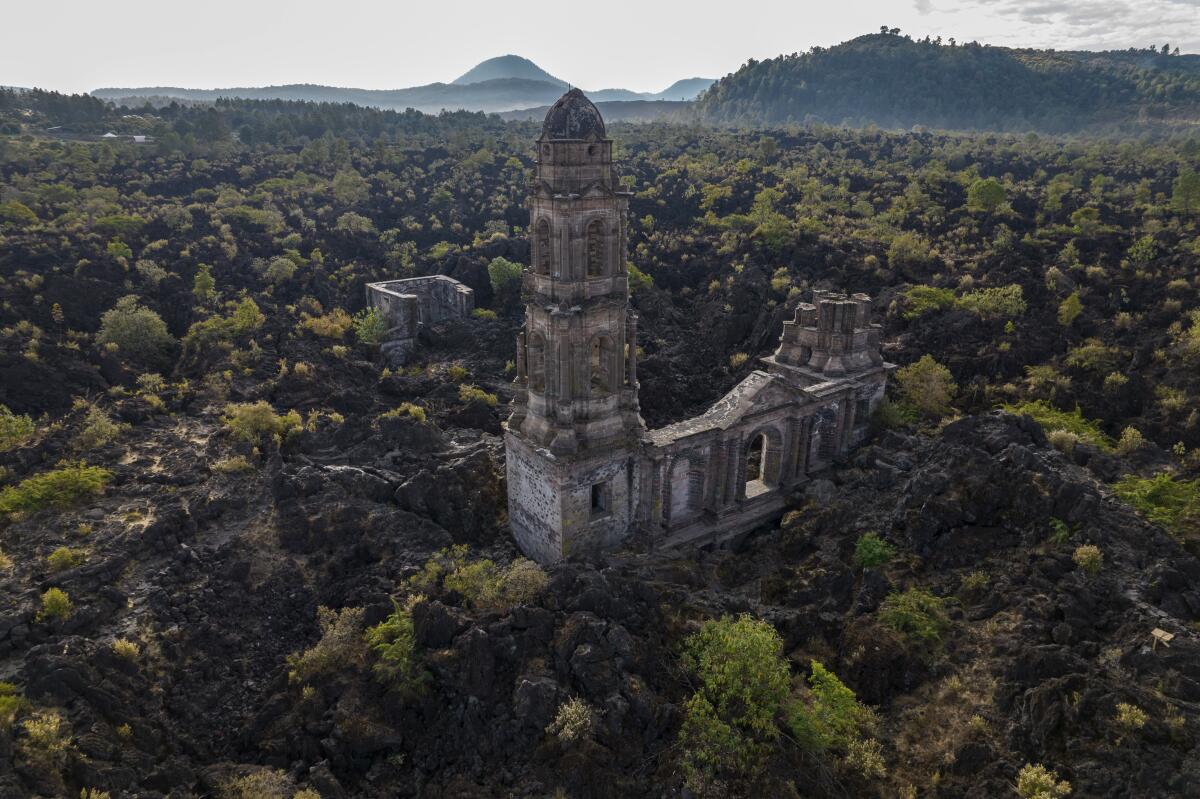
- Share via
SAN JUAN PARANGARICUTIRO, Mexico — The ground is still hot atop the crater of Paricutin — the first volcano of its kind to have its full life cycle documented by modern science after it erupted 80 years ago.
The surrounding vista in western Mexico encompasses pine-clad peaks of older volcanoes, green avocado orchards and a church tower peeking above where lava buried it decades ago.
Volcanoes are still being born around the globe and scientists believe another will form in the volcanic field spanning across this region, they just don’t know when.
That’s why about a hundred geologists, volcanologists and seismologists visited Paricutin last week to mark the anniversary, share experiences and talk about how to prevent disaster.
Paricutin’s birth and nine-year eruption were a cornerstone in the study of the relatively small kind of volcano that erupts only once, said Stavros Meletlidis, a Greek researcher at Spain’s National Geographic Institute.
The world’s most famous volcanoes already were thousands of years old when their catastrophic eruptions occurred: Mt. Vesuvius in Italy, which buried Pompeii in 79 AD; Mt. Tambora in Indonesia, which killed tens of thousands in 1815.
Mexico City’s neglected subway spotlights issues of inequality, poor public services and corruption so flagrant it kills. The mayor sent in troops.
To witness the origin of a new one is rare. It can start with a peculiar noise.
A deep sound is what Meletlidis remembers hearing in September 2021 before seeing the column of gas signaling the emergence of a volcano on Spain’s La Palma island. That was the most recent new volcano to form in a populated area. He and his team had been monitoring it for four years. The eruption was the “last breath” of a process that had begun 10,000 years earlier in the center of the Earth, he said.
Guadalupe Ruiz, 92, remembers hearing such a noise on Feb. 20, 1943, after weeks of small tremors in the western part of Mexico’s Michoacan state.
Then, it felt “like water rising underground,” and, finally in the following days, it was “like a thunderclap or a kick from a horse” as Paricutin’s cone began to form and rocks fell all around, she said.
Ruiz was then a 12-year-old girl in San Juan Parangaricutiro, Mexico, where she and her neighbors thought it was the end of the world. A farmer came running with his hat covered in ash saying that his corn field had opened up.
“They told us it was hell,” said Ruiz, her long gray hair in braids.
Protest in Peru aimed at removing the president has become a rebellion of the Indigenous and poor, pushing for broad political, economic and social changes.
A team of geologists from the U.S. Department of the Interior and Mexican scientists visited the site 20 times between 1943 and 1945 and summarized the eruption in a report more than a decade later. On that initial day, there was a mild explosion followed by “a small eruptive column carrying dust, and some hot stones arose from this new vent,” the report says.
“After about 8 hours of such activity the new volcano began to roar and to hurl out quantities of incandescent bombs with great force,” it says. Within six days, it reached a height of 167 meters (548 feet), the report says.
The adults cried, Ruiz recalled.
Curious children tried to get close “to see the lava move, little by little,” said Abel Aguilar, motioning like waves with his hand. He was 5 at the time.
The landscape went from a “small and beautiful volcanic monster” to a “desolate and wiped out world” of dying trees and homes filling with ash, wrote Mexican journalist José Revueltas, who visited 40 days after the eruption for the Popular newspaper.
The geologists’ arrival consoled the community because they were able to explain what happened and — importantly — provide work, Ruiz said.
Owners of Xoloitzcuintles tout the iconic hairless dog breed’s loyalty and sacred role in Indigenous Mexican history.
“My dad took the Americans on horseback to see where the fire was coming out and where the little mountain was forming,” she said.
Paricutin’s lava eventually covered seven square miles. Its slow advance allowed residents of the surrounding communities to relocate to land donated by the government.
Nobody was killed.
Unlike earthquakes, volcanoes sometimes give people time to react.
In the years leading up to the 2021 eruption on La Palma, clusters of tremors had increased in frequency a week before the eruption. Also, deformities on the surface suggested magma was pushing up. Two days before the eruption there was a strong smell of sulfur in springs monitored by scientists.
The Paricutin volcano is within a volcanic belt that crosses Mexico.
Despite spiraling violence and a stagnating economy, Mexican President Andrés Manuel López Obrador has maintained sky-high approval ratings because he speaks to the working poor.
Tremors in recent years including a burst late last year have raised fears that another volcano could appear, said Luis Fernando Lucatero, the local civil defense coordinator. Scientists later confirmed last year’s quakes were superficial, with no magma rising toward the surface.
The National Autonomous University of Mexico’s Geophysics Institute has installed seismographs in key locations to monitor the volcanic field, and trained local leaders to detect other signals.
Denis Legrand, one of the volcanologists on the project, said more equipment and personnel are needed because with the current number of stations some tremors could go unnoticed until it is too late to react.
A year and a half after the Paricutin eruption began, residents of San Juan, the largest town in the area, left in a procession behind the image of their patron saint and rebuilt their town and church elsewhere. The old town was later buried in 50 feet of lava.
While the volcano today draws visitors who bring an important source of income, the buried church is a reminder of what the earth unleashed.
“A volcano [gives] life. It sometimes destroys too,” Meletlidis said.
More to Read
Sign up for Essential California
The most important California stories and recommendations in your inbox every morning.
You may occasionally receive promotional content from the Los Angeles Times.
